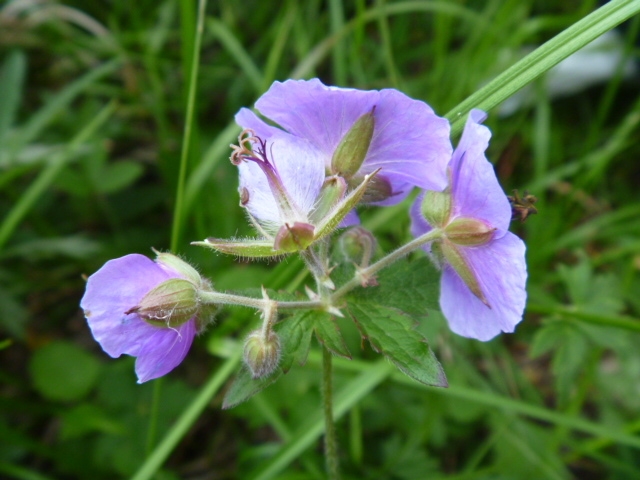Broadleaf Geranium
(Geranium platyanthum)
Broadleaf Geranium (Geranium platyanthum)
/
/

Bruce Calvert
CC BY 4.0
Image By:
Bruce Calvert
Recorded By:
Copyright:
CC BY 4.0
Copyright Notice:
Photo by: Bruce Calvert | License Type: CC BY 4.0 | License URL: http://creativecommons.org/licenses/by/4.0/ | Rights Holder: Bruce Calvert | Publisher: iNaturalist | Date Created: 2017-07-12T17:12:55-07:00 |

























Estimated Native Range
Summary
Geranium platyanthum, commonly known as Broadleaf Geranium, is a deciduous perennial herb native to temperate regions of Eastern Asia, including forests, grasslands, and meadows. It typically grows at a moderate rate to a height and width of 1-2 feet (0.3-0.6 meters). The plant features deeply lobed leaves and bears pink or purple flowers that are quite showy during their summer blooming season. The flowers are hermaphroditic, having both male and female organs, and are pollinated by insects.
Broadleaf Geranium is valued for its ornamental flowers and foliage, which can add a splash of color to garden borders, woodland gardens, and as ground cover. It is relatively easy to maintain and can be propagated by seed or division. In cultivation, it prefers part shade but can tolerate full sun in cooler climates. It thrives in medium or fast-draining soils, including clay, loam, or sandy types, and requires moderate watering. While generally disease-resistant, it can occasionally suffer from rust or leaf spot. It is not known for being invasive and does not have aggressive roots, making it a safe choice for a variety of garden settings.CC BY-SA 4.0
Broadleaf Geranium is valued for its ornamental flowers and foliage, which can add a splash of color to garden borders, woodland gardens, and as ground cover. It is relatively easy to maintain and can be propagated by seed or division. In cultivation, it prefers part shade but can tolerate full sun in cooler climates. It thrives in medium or fast-draining soils, including clay, loam, or sandy types, and requires moderate watering. While generally disease-resistant, it can occasionally suffer from rust or leaf spot. It is not known for being invasive and does not have aggressive roots, making it a safe choice for a variety of garden settings.CC BY-SA 4.0
Plant Description
- Plant Type: Herb
- Height: 1-2 feet
- Width: 1-2 feet
- Growth Rate: Moderate
- Flower Color: Pink, Purple
- Flowering Season: Summer
- Leaf Retention: Deciduous
Growth Requirements
- Sun: Part Shade, Full Sun
- Water: Medium
- Drainage: Medium, Fast
Common Uses
Border Plant, Butterfly Garden, Low Maintenance
Natural Habitat
Temperate forests, grasslands, and meadows in Eastern Asia
Other Names
Common Names:
Scientific Names: , Geranium platyanthum, Geranium eriostemon, Geranium eriostemon, Geranium eriostemon f. hypoleucum, Geranium eriostemon f. hypoleucum, Geranium eriostemon f. megalanthum, Geranium eriostemon f. megalanthum, Geranium eriostemon var. caeruleum, Geranium eriostemon var. glabrescens
GBIF Accepted Name: